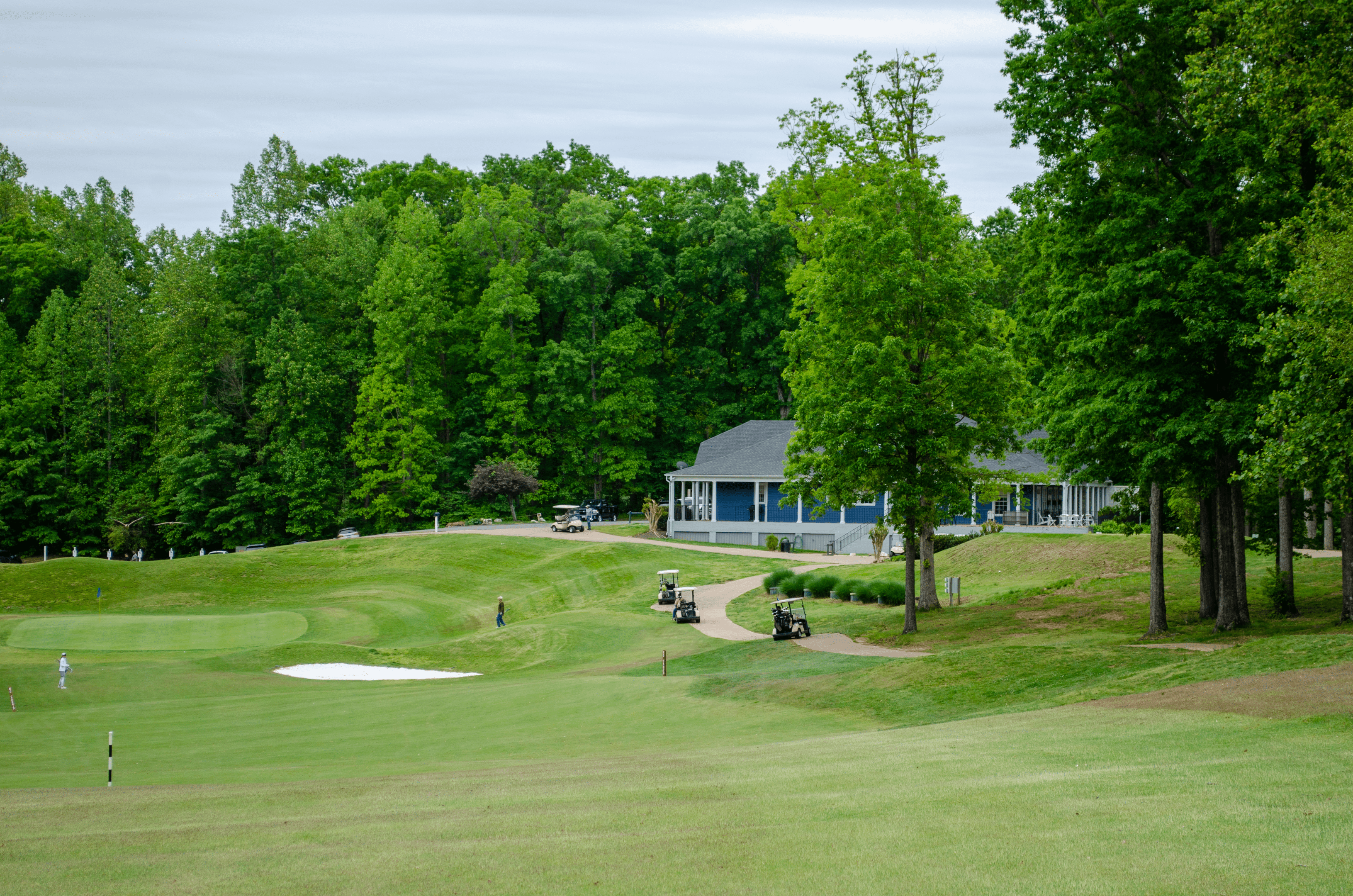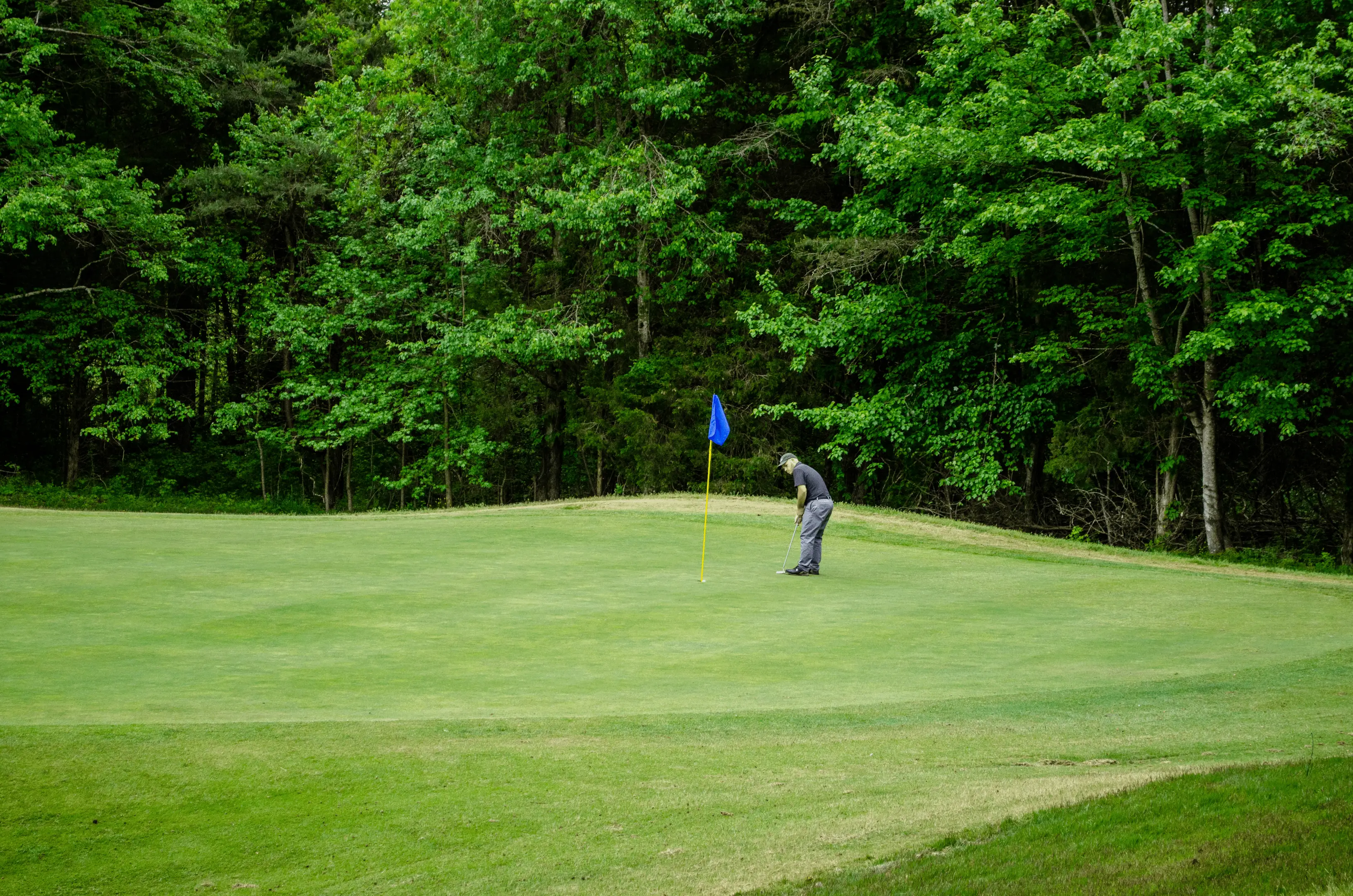For many golfers, including myself, the 7-iron was one of the first clubs you swing when learning the game. It’s easy to hit, and you can often get good shots out of it without too much struggle, even if you are a beginner, but the seven hybrid may be even easier to hit!
The seven iron has less loft and will create a lower trajectory shot with less spin. The seven hybrid will have a chunkier clubface than the seven iron, and be will be that much easier to hit out of the rough than the 7-iron will be, but the 7-iron will offer you more control and shaping on shots.
While many golfers opt for hybrids to replace their long irons, which are typically more challenging to hit, especially for higher handicap players, having shorter hybrids in the golf bag does offer some advantages.
7 Hybrid Club Vs. 7 Iron-Loft
As a rule, the hybrid clubs have more loft than the ordinary irons, as this helps golfers get the ball into the air easier than with irons. While the 7-iron is not that difficult to hit, the hybrid’s loft and clubface design make it easier to launch the ball.
The typical 7-iron has between 28 degrees and 32 degrees of loft, while the 7-hybrid has a loft of around 34 degrees, depending on which one you buy.
Where players have slower swing speed like seniors or ladies, the higher lofted face of the hybrid makes it less challenging to get the ball airborne from the fairway or the rough.

One of the benefits of a 7-hybrid over a 7-iron for players with slower ball speed is the higher spin and trajectory from the 7-hybrid will bring the golf ball down softer and with less roll, so approach shots will tend to stay on the green rather than roll through.
7 Hybrid Clubs Vs. 7 Iron–Ball Striking & Forgiveness
Most golfers opt for hybrids over irons because the hybrids offer a more prominent and wider sweet spot with greater forgiveness than irons do. Even with the game improvement irons, the hybrids bring greater confidence in ball striking for beginners and higher handicap players.
Due to their wider sweet spot, the hybrids generally will deliver straighter golf shots more consistently. While this can affect shaping, for higher handicap players where shaping is not a factor, more straight shots mean more fairways and greens hit, reducing lost shots on the scorecard.
As golf at the higher handicap levels becomes more focused on accuracy rather than distance, the shorter hybrid clubs are enjoying more popularity, with some players opting for complete hybrid sets rather than a mix of irons and hybrids.
7 Hybrid Vs. 7 Iron – Distance & Control
On average, the seven iron will have a distance advantage over the 7-hybrid due to the lower loft, and this means that carry will be greater with the 7-iron than with the 7-hybrid. One of the chief considerations when looking at hybrids over regular irons is the kind of golf you want to play.
Golf is a game of how many and not how far, and while far is a factor, the distance differences between the seven hybrid and 7-iron are not that vast as severely impacting scoring.
Yardage comparisons for an average swing speed only leave about a 5-6 yard difference between the 7-iron and 7-hybrid. This would not be very important for an average weekend player in terms of game impact.
One of the reasons that 7-hybrids are becoming more visible in golf bags is that some 7-irons have steeper lofts of 28 degrees-30 degrees, making them more difficult to hit for players with slower swing speeds which in turn create slower ball speed.
With lower lofted clubs, the ball will go further, but what is interesting is that a 7-iron and 7-hybrid with the same loft don’t have the same distance, and more often than not, the 7-hybrid has more distance of between 5-7 yards.

The clubface and golf club head design with a lower CG and more forgiveness contributes to a straighter ball flight with the same swing speed, giving that slight edge on distance.
The other reason why hybrids would have more distance than irons is that they tend to be longer
7-Hybrid Golf Clubs Vs. 7-Iron: Shaping
One area where the 7-iron is superior is that of control and shaping. Because the hybrid is designed to promote a straighter flight and a more forgiving strike, mid and low handicap players will have greater shaping abilities with the 7-iron over the hybrid.
This is why many players at this level don’t have shorter hybrids in their bags. If they are going to use hybrids, they will utilize them for a long iron like the 3 and 4 iron, as these are more difficult to hit than the hybrid equivalent.
If you play at this level, you will have a higher swing speed (and higher ball speed) and won’t struggle to get the ball airborne and so you would be unlikely to opt for a 7-hybrid over a 7-iron. It will be easier to draw and fade the ball with a 7-iron than it will with a seven hybrid, and typically the hybrids tend to lose the ball to the left and hook more than the irons will.
This is due to the hybrid’s partially and slightly closed clubface setup and a tendency for the clubhead to twist on impact due to its design and shape, causing the face to close and promoting a greater left-right spin.
The 7-iron may be more prone to fading or slicing than the hybrid, and players who struggle with the right-left sidespin often opt for hybrid irons but could compromise on control.
7 Hybrid Vs. 7 Iron – On The Course
Short irons are pretty easy to hit from the fairway, the tee (on the short par 3’s), and the rough, but the hybrid is easier to hit from the rough due to the clubface and clubhead profile.
The blend of iron and fairway wood design in the hybrid allows the clubhead to interact much better with the rough conditions and gives a player that may have found the wild off the tee a greater chance of escape.
This is particularly valid where players have a slower swing speed and where getting through the rough may require more effort. Where the ball is sitting up on the fairway, either golf club is easy to hit, but the hybrid may prove a better option from the rough.
Hybrids are designed to make consistent ball striking that much easier, so there is no shame in opting to have shorter hybrids in your bag if you feel more confident using them, achieve more consistent results in accuracy and reduce wasted shots cost you on the scorecard.
It only makes sense to take advantage where you can, and if having a whole set of them works for your game, then that is the way to go.
7 Hybrid Vs. 7 Iron – Accuracy
Many golfers prefer hybrids over long irons, especially the three and four iron, as players with slower swing speeds will have difficulty hitting those clubs consistently and accurately.
As the irons get shorter, golfers tend to stick with their irons. You won’t find too many players with six hybrids or six hybrids in their bags, as these mid and shorter irons are easier to swing and control to achieve consistent distance and accuracy.
One aspect of the hybrid/iron discussion has to be that hybrids would be more accurate in the mid and short iron categories.
There are opinions that shots from 180 yards or longer would be more accurate with hybrids as they produce straighter shots while sacrificing shape. Many mid to high handicap players will resort to using hybrids at this range to increase accuracy, and they do achieve this using these clubs.
Is Swinging A 7 Hybrid Different To A 7 Iron?
While trying to hit a 180 or 200-yard shot with a long iron may be daunting, the use of hybrid clubs from this distance is a better proposition for many, and this is why three and four hybrids, even five hybrids, have a place in the bag.
Hybrids are far more like irons than fairway woods, and as such, the golfer still has to hit down on them to achieve launch, speed, and distance. The only difference is that the clubhead shape and profile are much larger, with the more prominent sweet spot allowing for more solid and consistent hits.
Therefore, the swing technique for hybrids is the same as irons and not the same as fairway woods, and achieving consistent distance and accuracy (like everything else in golf) requires a consistent swing.
This is relevant for any player who thinks switching a seven iron to a seven hybrid to fix a swing fault will work. While it may result in more straight shots, the golf club can only improve the overall result so much.
For example, if you are consistently slicing your 7-iron or suddenly developed a fade, rushing off to change clubs is probably not the best option, as you may find that while using a seven hybrid fixes or reduces the fade, you may move to the other end of that scale and start hitting severe draws and hooks!
Before investing in shorter hybrids, you may want to consider a session with a swing coach to evaluate the issue you may have with hitting shorter irons consistently.
7 Hybrid Vs. 7 Iron – How The Average Golfer Decides Which To Use
Firstly, if you have trouble hitting your seven iron, especially if you have a slower swing speed, are an older golfer, and struggle to get the ball in the air or get distance, then using a seven hybrid would be an option for your game.
If you find that your 7-iron is too shallow and doesn’t get enough height and spin to land on the greens and hold them, or you tend to be inconsistent with your striking on the 7-iron, then the hybrid will undoubtedly work for you in terms of achieving straighter shots more consistently.
If you tend to find yourself in the rough or off the fairway and need a golf club for those mid-range shots from around the 160/170-yard mark, then a seven hybrid would be an option for your bag.
Conversely, you may find that the hybrid gives too much height and sacrifices distance over the 7-iron, or you want more control over your shots, especially if you have aspirations to improve your scoring, then the 7-iron is a better option.
7 Hybrid Vs. 7 Iron – How To Choose
The best way to decide whether to have a 7-iron or seven hybrids is to take a few different versions out to the range and test them yourself. Indoor simulators may indicate which would work better, but nothing beats hitting clubs off the grass, and this is where the real test will be.
Get different brands of the seven iron and the seven hybrids, hit ten shots with each one, and see what distance and accuracy you achieve. If you can, go to a facility with accurate yardages and targets so that you can make notes on the performance of each one.
Make sure to warm up, though, so you swing at full power with all the different clubs, then you can decide which to have in your bag. If possible, take the club you have picked and play a round with it to see how it performs on the course and whether you get similar results to those you saw on the range.
Conclusion
If you aren’t sure about the hybrid or iron, take a look at how many pros use shorter hybrids in their bags instead of the longer ones, and that should tell you everything you need to know about these clubs and their value in the game.
Knowing your game’s strengths, weaknesses, and aspirations will significantly influence whether you opt for the 7-iron or seven hybrid, and it all comes down to what you require the club in that 7-iron range to do for you on the course.
- Should Tee Boxes Be Level? - January 23, 2024
- 3 Hybrid Distance - November 15, 2023
- Innovations in Golf Mobility: An In-depth Review of Top Golf Scooters - October 12, 2023
